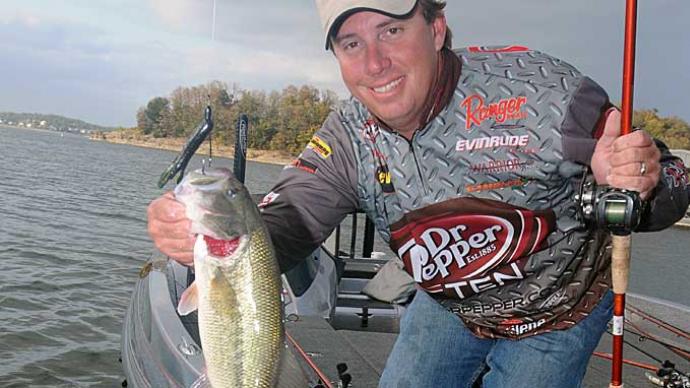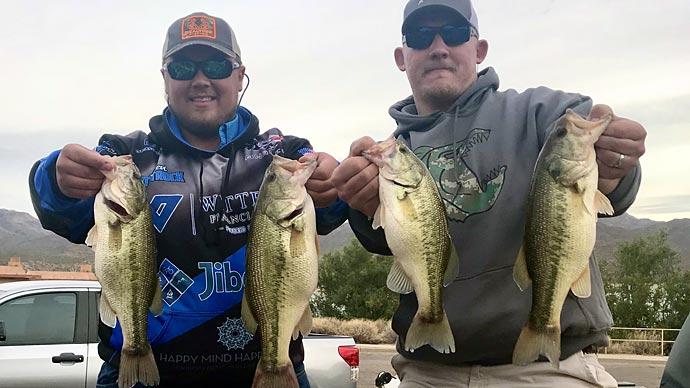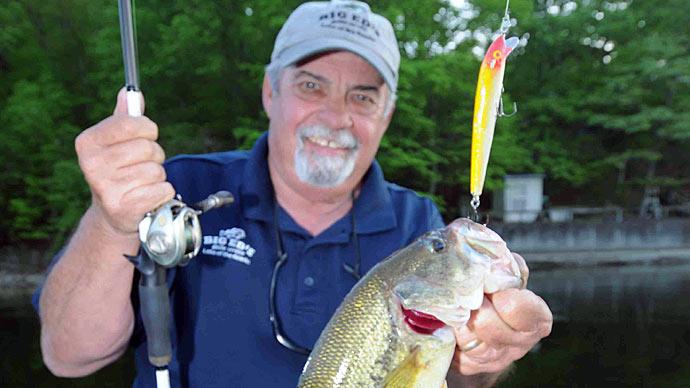
Catch and release is the 11th commandment. Either B.A.S.S. founder Ray Scott or Moses etched it in a stone fishing tablet somewhere, years ago.
Maybe big public lakes live or die by catch and release, but private bodies of water will die by strict policies of turning back all comers.
Today, corner Ray Scott and ask him about properly managing a private fishery. He switches hats. "Slot limits, selective harvest is essential to the success of a private fishery." He's adamant. "I tell fishermen on my 55 acre 'President's Lake' to take out all the yearling bass they catch. If it's between 10 and 14 inches, we harvest them." He doesn't finish his statement there. "Once we have taken as many as we think we should, we take out that many more."
Hear, here.
When a new fishery is properly stocked from the beginning, ratios of fish are dominated by a growing, expanding food chain. When game fish are added, it's only a matter of time until predators dominate the fishery.
Prudent fisheries management monitors game fish growth to determine when predators begin to gain the upper hand over their food sources.
How can you tell?
Game fish growth levels off, and individuals within a population begin to lose weight.
Anglers catch underweight fish.
This principle applies to all game fish. Walleye, smallmouth, crappie... as well as largemouth bass.
Everywhere I go, it's the same. People don't want to take fish out of their lake or pond. One young employee of mine, 10 years ago, put it simply, "Eating a bass is like eating the family dog." As long as anglers see it that way, bass stay put. Populations reach status quo. No in, no out, no grow.
As I travel and talk to pond owners around the country, there's a slight change on the horizon of their thinking.
One man has two annual fishing derbies on his 40 acre lake in the midwest. His lake is dominated by largemouth bass, especially those "slot" fish. So, he invites his family and friends, they have a few snacks, then at 4 pm, boats take off. With live wells, and plenty of artificial bait, anglers pummel the water, chasing slot bass. Bass between 10-14" are kept, bigger fish are photographed, weighed and measured, recorded and released. He generally removes 85-90 bass during each derby. Then, harvested fish are filleted, dipped in cornmeal, immediately cooked and enjoyed by all. After 3 years of selective harvest, the latest fisheries survey showed better distribution of bass, and higher numbers of young of the year bluegill. One big issue where he lives? He only has a 4-5 month growing season for largemouth bass. So, his slot bass may be as old as 4 or 5 years. Big bass, 5 or 6 pounders, take as long as 7 or 8 years to reach that size where he lives. Don't waste time by not harvesting fish.
Another man, in upstate New York, has a scenic, meandering 140 acre lake, overcrowded with largemouth bass. But, he also has hybrid stripers, walleye, black crappie, yellow perch and a few smallmouth bass. With that many kinds of predators keying on perch, bluegill and pumpkinseed sun-fish young, you would think the food chain would be gone.
It is.
Interestingly, walleye and smallmouth numbers are low. You guessed it. Largemouth bass are dominant. But, this landowner took a different approach. He is using a fish called "tiger" musky.
Tiger musky are a cross between northern pike and muskellunge. A true hybrid, what you stock is what you get. These fish grow rapidly in northern waters; have a big mouth, and most importantly, teeth. Guess what they eat?
Over the last 6 or 8 years, tiger musky have been eating slot bass. They tend to frequent the same habitat, have similar feeding habits. Never heard of a bass predator? Think about tiger muskies.
Careful though. Tiger musky grow 40-50 inches long, and can eat bass as large as three pounds. Know what you are doing if you choose these fish to help harvest overcrowded species of fish. A few tiger musky go a long way.
Traditionally, people who are consistent, have a sound management strategy from the beginning, and who know when to change their strategy have the best results, long term. Study the dynamics of fisheries management before stocking. Keep your goals firmly in sight. Then you are most likely to succeed.
Here's the best plan of all.
Plan your stocking, before the hatchery brings any fish. Know your goals. Make a plan, and then follow it. Prepare the food chain, set the table for a smorgasbord for game fish. Are you planning to stock several species of game fish? Know their habits, and time your stocking, when the lake and its fishery are prime.
Monitor growth rates.
Fish grow fast early, then level off as groceries diminish. Weigh and measure your game fish and keep a running track of their progress. We use an Excel database to create graphs of fish growth, and to see when specific size ranges are beginning to clog and overcrowd. Study size distributions, along with lengths and weights. If you track lengths and weights of your fish, those numbers, along with a dose of common sense, will tell you when it's time to change.
You will see growth rates change. Be on point. Here's an important tip. The original game fish you stock won't be the ones to harvest. Take their young, as those babies mature. If you monitor growth rates, the time to harvest will leap off the paper into the boat with you.
Here's a classic example. There's a pondmeister outside Tulsa, Oklahoma with an 8-10 acre lake, in its fourth growing season. Last year, electro-fishing surveys indicated outstanding growth of originally stocked bass. Fishing has been slow, which makes sense, because his bass feed like a fat boy at Golden Corral. All they can eat. Last year, his two year old bass, in their third season, weighed heavier than three and a half pounds. Those fish are great, catch and release has worked. But, the lake is primed for a shift. Original bass have spawned twice now. Their young are competing heavily in the lower end of the food chain, pillaging baby bluegill, baby red ear, minnows and their little siblings. This fall will likely be the time to begin selective harvest of slot bass.
What are the consequences of selective harvest?
Simple... maybe.
More food stays available for fewer fish. Fish grow larger, size distribution is balanced. If you can manage your bass population where 25-30% of fish grow larger than 16 inches, two important things happen. You can grow huge fish...and huge fish cull smaller fish for you. Businessmen call it "win-win."
Selective harvest is an important tool, as important as catch and release, proper stocking and husbandry.
Here's your bottom line. Study your pond. Learn to listen to its language. It will tell you when to change.
Then, overcome the emotions associated with harvesting a fish. Do yourself, and your lake, a favor.
Bring on the friends, break out the cornmeal, and take care of your fisheries business.
Well balanced fish are happy, healthy fish.
Bob Lusk is a fisheries biologist and consultant with over 25 years experience and can be reached at Texoma Hatchery at (903)564-5372.
Reprinted with permission from Pond Boss Magazine



